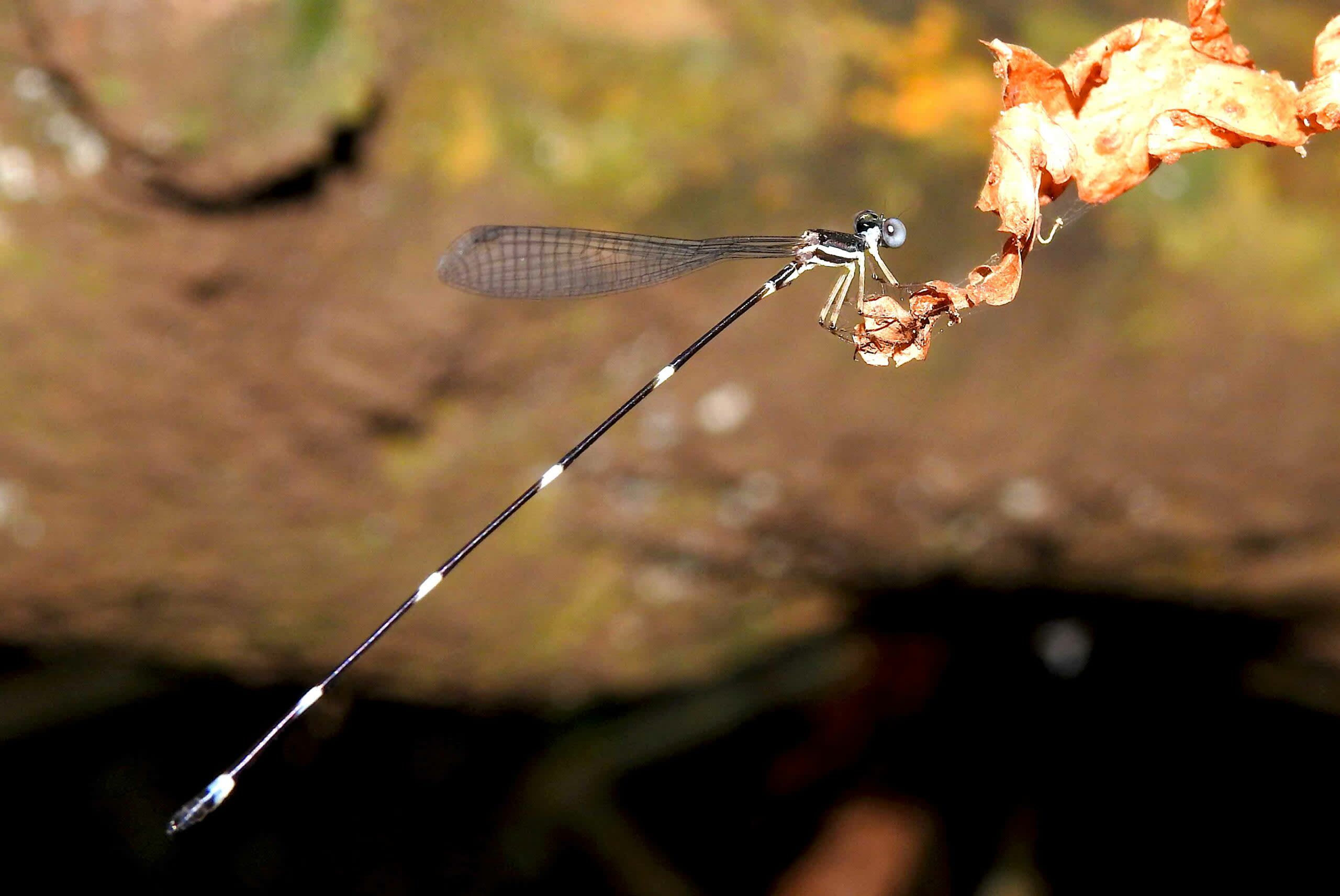 Listen to this article
•
15:34 min
Listen to this article
•
15:34 min
Our walk from Thirunelly inspection bungalow in Kerala began late, but my friend was unhurried. He was after antlions (Order Neuroptera; Family Myrmeleontidae) and owlflies (Order Neuroptera; Family Ascalaphidae) whose taxonomy he was studying for his PhD.
Every turn of our path yielded an owlfly clinging to a twig. The forest watcher guiding us suggested we pick up our pace if we wanted to reach Pakshipathalam Bird Sanctuary, but my friend was unmoved. He was in Wayanad to collect the critters he had chosen to study. For him the destination did not matter. I had piggybacked on this trip, eager to see some odonates in the jungle. I had spent the previous day wading in the River Kalindi that flows through the forests of Thirunelly and had a memory card filled with photos of dragonflies and damselflies. My friend wasn’t too happy. I was there to help him find his bugs, but instead I’d been wading in the river photographing odonates. I couldn’t help myself, for the river was full of endemic and exquisite odonate species flying and jostling with each other, establishing territories over the water to breed. The subjects of his study, on the other hand, were nocturnal, poor fliers, had terrestrial larvae, and showed no love for aquatic habitats.
I decided to dedicate the day to finding and collecting his flies. The streams on our path had almost dried up anyway. I figured there was zero chance of finding any interesting, let alone rare odonate on our path.
Then, my friend saw a long, slender damselfly clinging to the steep sides of the forest path. He called out to me, and as I rushed towards him, I instantly realised it was a reedtail.
Cover Photo: This male blue-necked reedtail (Protosticta mortoni) was spotted in Thirunelly, Kerala. It is a rare species of damselfly with very few records.
Damselflies, when compared to their close relatives dragonflies are thinner, have smaller, widely separated eyes and symmetrical wings which in most species are kept folded over the abdomen. Reedtails belong to a group called “shadow damsels” (of the family Platystictidae), known for their love of cool, shady places in the forests, often near small streams. Most have alternating dark and light colours that make them difficult to follow in the shade once they take flight. They have short wings and freakishly long abdomens. As one might guess, they are weak fliers and hence, have restricted geographical distribution. Twelve species exist in the Western Ghats, all of them endemic to the region’s forests. Most reedtails are limited to particular hill ranges and are not easy to identify. I took heed of the demanding task at hand and asked my friend for 15 minutes with the damsel. “Are you going to interview him?” he asked jokingly.
It was going to be like an interview, I thought, with a camera and no mic. I clung to the steep slope like a spider and photographed it from multiple angles. A pale blue neck (prothorax) with only its posterior lobe black, light brown legs with dark brown “knees”, and the peculiar shape of the anal appendages at the tip of its abdomen gave away its identity — a blue-necked reedtail (Protosticta mortoni). There aren’t many photographs of this rare damselfly from the wild.
The blue-necked reedtail was discovered in Coorg by the father of Indian Odonatology, Dr FC Fraser, in 1924. However, in 1984, two other researchers, Davies and Tobin, in their list of odonates of the world (The Dragonflies Of The World: A Systematic List Of The Extant Species Of Odonata), did not consider it a distinct species, and clubbed (synonymised) it with the more common pied reedtail (Protosticta gravelyi).
In 2020, a team led by the young Indian odonatologist Shantanu Joshi gave the critter its rightful position as a separate species by studying fresh specimens from Coorg. The pale blue prothorax with only posterior lobe black, light brown legs with dark brown joints and the distinctly shaped anal appendages made the specimens stand out from the other reedtails. Perhaps it was their rarity that caused all the confusion. Also, it takes a keen eye to spot the differences between different reedtail species.
So, what is the big deal with these damselflies? After all, they all look almost the same and probably play the same ecological role in the forests they inhabit. Reedtails are found only in hill ranges within the Western Ghats and in these pockets, they act as indicators of healthy, primary forests from where first-order streams originate. Reedtails have obligatory ties to these streams for breeding. As for us humans, the water security of entire states depends on the wellbeing of these habitats. In the forests they inhabit, reedtails feed on a variety of smaller insects, and they, in turn, become prey for larger predators like birds. They are, thus, an essential link in the forest food chain. Since many of these damselflies are hill range endemics, the possibility of discovering species new to science is very high. Even for some species we know of, photographs from the wild are non-existent. So, if a project is proposed that requires diversion of forest land that is reedtail habitat, I would definitely cry foul. Please do join me in the cry. They are the sentinels of our forests, guardians of our freshwater.
As it turned out, we never got to Pakshipathalam. We did not get to see the famed cave inhabited by bats and swifts. In the Brahmagiri camp shed where we sat down to catch our breath, my friend took stock of the insects he had collected. He was content. I was gleefully running through the photographs on my camera when I felt a sharp itch on my right thigh — all the crawling on the forest floor photographing the reedtail had invited hordes of ticks onto my body, ensuring scratchy memories for a year!










